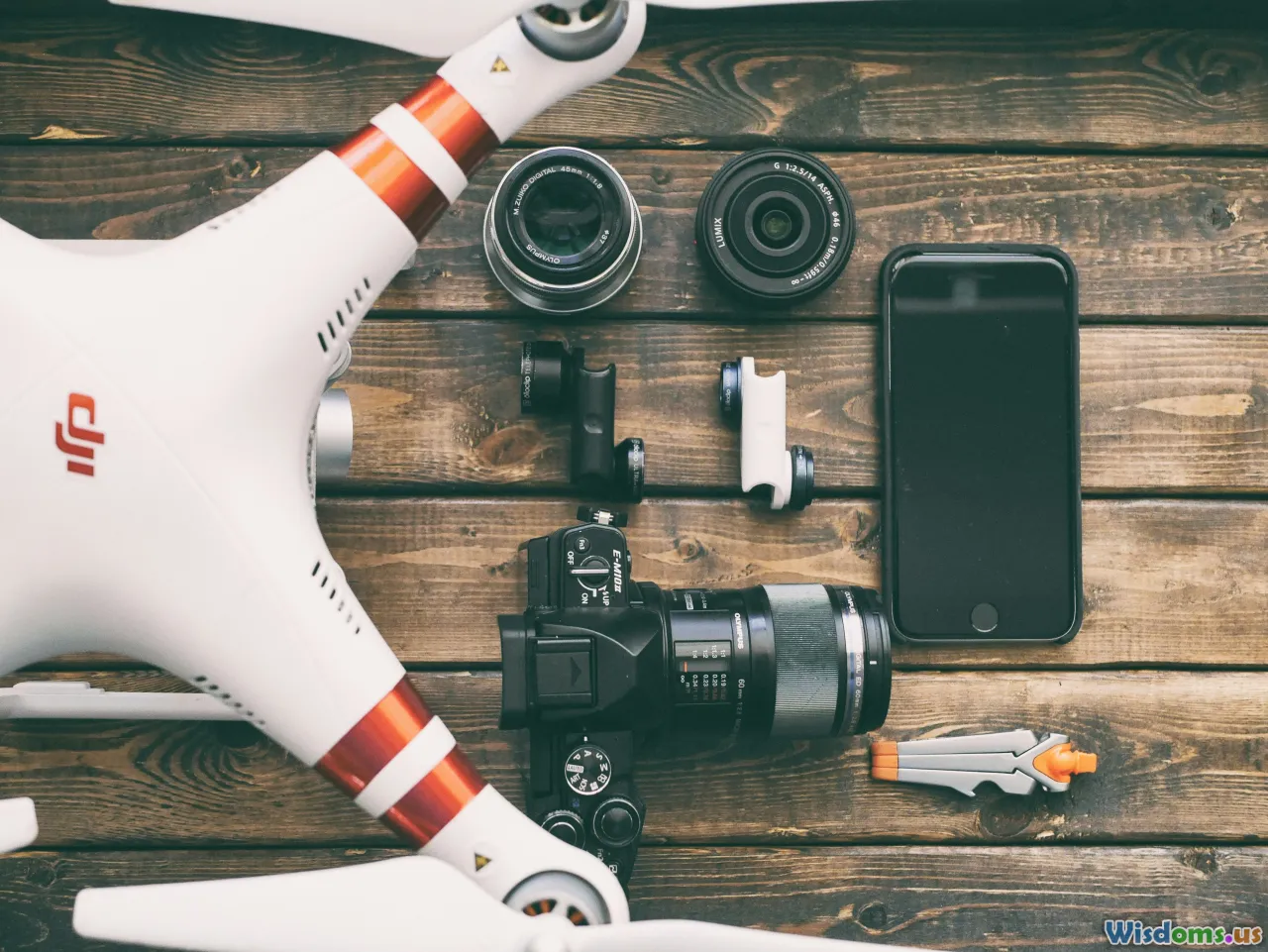
How Cargo Drones are Transforming Rural Supply Chains
11 min read Explore how cargo drones revolutionize rural supply chains with speed, efficiency, and accessibility improvements. (0 Reviews)
How Cargo Drones are Transforming Rural Supply Chains
Introduction
Imagine a world where delivery trucks, stuck on impassable rural roads or delayed because of inclement weather, are no longer the bottleneck in the supply chain. Instead, silent, efficient drones transport essential goods—medical supplies, food, parcels—faster and more reliably to even the remotest corners. This is not a futuristic fantasy; it's happening now. Cargo drones are pioneering a logistics revolution, transforming how rural areas receive goods and services and overcome long-standing infrastructural hurdles.
Rural supply chains, traditionally hampered by sparse populations, complex terrains, and infrequent deliveries, are undergoing a fundamental shift. Cargo drones promise not only speed and reliability but also significantly lower costs and greater sustainability. This article delves deep into this exciting transformation, grounding the discussion in real-world examples, key benefits, barriers, and the outlook for the future.
The Challenges of Rural Supply Chains
Geographic and Infrastructural Barriers
Rural areas often cover vast, difficult terrain with poor road infrastructure. According to a 2021 United Nations report, approximately 30% of rural roads in developing countries remain unpaved or poorly maintained. For example, mountainous regions like Nepal or remote parts of Alaska experience frequent road closures due to landslides, snowstorms, or flooding, severely limiting ground-based deliveries.
High Costs and Inefficiencies
Low population density means fewer deliveries spread over larger distances. This results in high per-unit transportation costs, reduced delivery frequency, and longer wait times for essential products. In many African and Latin American countries, rural residents face delays of several days or weeks for important medicines or groceries.
Impact on Economic Development and Quality of Life
Slow, unreliable supply chains restrict rural economic growth and contribute to inequalities. Farmers, small entrepreneurs, and healthcare providers often struggle to receive timely inputs and equipment, hampering productivity and service delivery. As a consequence, rural communities experience disadvantageous living conditions compared to urban areas.
Cargo Drones: An Overview
Cargo drones, also known as unmanned aerial vehicles (UAVs) or unmanned aircraft systems (UAS), are robotic aircraft designed to carry loads ranging from a few kilograms to over a hundred kilograms. Unlike consumer drones, cargo drones focus on freight transport.
Technology and Capabilities
Modern cargo drones feature:
- Autonomous flight with GPS precision
- Vertical takeoff and landing (VTOL) capabilities for landing in tight spaces
- Advanced sensors to avoid obstacles and manage air traffic
- Payload capacities ranging from 2 kg (e.g., Zipline health delivery drones) to over 200 kg (e.g., Walmart’s prime air trial drones)
By bypassing road networks, cargo drones can access isolated locations directly—in many cases reducing delivery time from hours or days to mere minutes.
Transformative Impacts of Cargo Drones on Rural Supply Chains
Improving Speed and Reliability
Consider Zipline, a pioneering company in drone delivery of blood and medical supplies in Rwanda and Ghana. By using drones to reach over 2,500 health clinics in Cambodia and Africa's diverse rural terrains, Zipline reduced delivery times from up to four hours by road to under 30 minutes by air.
In Alaska, where road access is limited, Matternet drones deliver vaccines and lab samples quickly between rural clinics and centralized hospitals, reducing risks associated with delayed diagnostics.
Reducing Costs
While traditional vehicle fleets rely on fuel, maintenance, and human labor, cargo drones have lower operational costs over time. For example, DHL’s parcel supply chain pilot in Germany demonstrated a potential 40% cost reduction by replacing some ground segments with drone delivery, particularly in last-mile links into rural communities.
Expanding Accessibility
Drones’ ability to take off and land vertically makes them uniquely suited to rural environments lacking conventional infrastructure such as airports or large roads. In remote Amazonian villages cut off during rainy seasons, drones provide year-round access for essential deliveries.
Encouraging Sustainable Practices
Electric-powered drones produce lower greenhouse gas emissions compared to diesel trucks. Organizations like Amazon and UPS are investing heavily in cargo drone R&D aimed at reducing the carbon footprint of their logistics networks.
Real-World Examples
Rwanda and Zipline
Zipline’s drone delivery system has served over 22 million people, delivering critical medical supplies such as blood, vaccines, and antivenoms. The drones, flying paths of up to 80 kilometers, operate from distribution centers strategically located near Kigali. According to Zipline, 85% of their flights arrive in under 30 minutes, enabling rapid emergency response and saving thousands of lives annually.
Amazon Prime Air
Amazon’s pilot drone delivery program is testing small to medium cargo drones capable of delivering packages under 5 pounds within 30 minutes. Though initially focused on urban and suburban deliveries, future plans contemplate rural distribution hubs, leveraging drone speed and penetration to serve isolated customers more effectively.
Matternet in Switzerland and the USA
Matternet specializes in drone networks for medical logistics. In Swiss hospitals, their drones transport lab samples across campuses, slashing transit times drastically. In the USA, Matternet partners with UPS to support healthcare facilities in rural North Carolina, providing vaccinations and medical tools rapidly.
Overcoming Challenges and Limitations
Regulatory and Airspace Management
A major barrier for widespread drone integration is regulatory approval. Different countries have varying rules regarding beyond-visual-line-of-sight (BVLOS) operation, a necessity for rural deliveries. Agencies like the FAA in the USA are gradually updating frameworks to support safe and scalable drone flights.
Payload and Range Constraints
Current drone technology limits payload to small-to-medium items, typically under 10 kilograms. However, ongoing R&D efforts aim to develop larger drones capable of transporting bigger supplies or multiple packages simultaneously.
Weather Vulnerability
While drones bypass road conditions, they can be affected by high winds, rain, or fog. Designers are enhancing drone robustness and incorporating real-time weather data analytics to optimize flight safety.
The Future of Rural Supply Chains with Drones
Integration with Existing Logistics
Cargo drones are unlikely to replace trucks entirely but act as complementary assets. Hybrid models use drones for last-mile deliveries from centralized hubs or to access otherwise unreachable points.
Networked Drone Systems and Urban-Rural Linkages
The concept of an interconnected drone network holds promise. Drones could shuttle goods between urban warehouses and rural villages, creating a continuous logistics chain with real-time tracking and minimal delays.
Socioeconomic Revitalization
Faster, cheaper deliveries of agricultural inputs, medical supplies, and consumer goods empower rural communities economically and socially. This convenience may reduce rural-urban migration by improving quality of life and business prospects.
Public-Private Partnerships and Innovation
Governments, NGOs, and private companies increasingly collaborate to pilot cargo drone projects addressing specific rural needs. For example, UNICEF partners with Zipline to reach underserved health clinics. Innovation will likely accelerate as drone platforms and regulations mature.
Conclusion
Cargo drones are more than just technological novelties—they represent a paradigm shift for rural supply chains. By sidestepping physical and economic barriers imposed by geography and poor infrastructure, drones provide dramatic improvements in delivery speed, cost efficiency, and access. The transformative potential spans healthcare, agriculture, retail, and emergency response, directly improving rural communities’ resilience and development.
While challenges like regulatory restrictions, payload limits, and weather remain, ongoing advances in drone technology and policy frameworks are steadily mitigating these concerns. As these systems scale and integrate with traditional logistics networks, their real impact will come to full fruition.
For rural areas long hindered by inefficient supply chains, the sky is literally no longer the limit. Cargo drones give remote communities a vital lifeline, marking a new frontier for equitable and sustainable logistics in the 21st century.
References:
- Zipline Official Website: https://flyzipline.com/
- United Nations Rural Infrastructure Report, 2021
- FAA Drone Regulations Updates, 2023
- DHL and Amazon Drone Trials, 2022
- Matternet Medical Drone Initiatives
Rate the Post
User Reviews
Other posts in Freight & Cargo Transport
Popular Posts















